The surefire, tried-and-true trick to increasing your pop-up conversions is simpler than you might think.
Just launch more pop-ups.
No, it's not a joke. If you want to engage and convert more visitors, you must first create more offers, then target each one at a different visitor segment.
How to make pop-ups relevant
At first, you might not think you need more than one pop-up. Why would one visitor need more than one offer? You want them to convert after all, so why not offer them only the best option? Just one powerful message should fill up your list with emails, right?
That would be nice. However, it never works exactly like that.
A single, generic pop-up rarely delivers any meaningful conversions. Most visitors ignore it. In fact, some even leave the site because of it.
Missed conversions often come down to these two reasons:
- Your offer is too generic or irrelevant.
- The pop-up shows at the completely wrong time, irritating visitors.

It all comes down to understanding your visitors and tailoring multiple pop-ups to their user intent. With that in mind, follow this guide to improving your pop-up strategy.
Understand where your visitors come from
Some visitors might have discovered you for the first time in Google’s search results. Others might have seen your site before and are still making up their minds about buying from you. Visitors also might have heard about your store through a social media campaign you ran, a news article about you, or other media appearance.
Each type of visitor has a slightly different goal in mind:
- First-time visitors usually just want to check you out.
- Returning visitors might be comparing your products or prices with that of your competitors to decide whom to buy from.
- Social media visitors are often driven just by curiosity.
- Visitors who saw an advertising campaign of yours often come to buy products.
A single pop-up can potentially target all of those needs. At the same time, however, knowing those needs can help you better target your pop-ups and increase conversions. Identify your target audience segment first, then launch pop-ups that target each group specifically. Here’s how:
Identify target audience segments
The visitor segments described above (first-time visitors, returning visitors, and visitors from social media or ad campaigns) are common to every site. Whether you run an e-commerce store, a B2B website, or personal blog, you will encounter them.
Depending on your business type, you could also have other, more specific visitor segments.
These could include:
| Visitors from specific locations |
| Visitors who show specific engagement |
| Visitors using certain technology (e.g. if you sell Mac-only products, you might care about visitors using the Mac-specific operating systems more than others) |
| Visitors landing on your site from a particular type of device (e.g. mobile phone, tablet or desktop computer) |
| Visitors who speak a certain language |
The most common way to figure out who your visitor segments are is to evaluate them using Google Analytics data.

The Audience report, for example, is a Google Analytics tool that contains a wealth of information about your visitors’ demographics, location, language, behavior, technology, and more. Here’s an example of an engagement report in Google Analytics.
Tailor your pop-up strategy to each customer segment
The key to engaging a specific customer segment is relevancy.
For example, let’s pretend we're launching pop-ups for a Shopify store to convert more visitors into customers. Using an analytics tool, we can identify the following customer segments as targets:
| New visitors who’ve landed on the home page |
| Returning visitors just browsing the site |
| Returning visitors who have started the buying process (added products to the cart and started checking out) |
| Visitors from specific locations |
| Visitors browsing on mobile devices |
All of these segments offer commercial potential. Even if you can’t convert them into sales, you can attempt to get them on your mailing list. From here, you can begin making pop-up to appeal to each segment.
RELATED: Learn more about customer segmentation when you take a deep dive into cohort analysis.
Segment #1: New visitors landing on the home page
We can safely assume that someone landing on the home page probably got there through a generic Google search. They could have heard of my store and googled my brand or looked for category keywords for which my site is optimized.
These customers are driven by curiosity, and since it’s their first visit to the store, they don’t know much about your business or value proposition.
To engage them, you can use a pop-up to display a welcoming message like this:
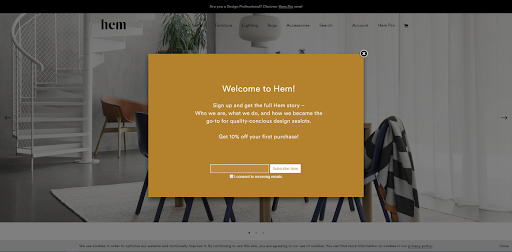
You could also use a pop-up to suggest new products or sections of the site they might find interesting.

To avoid irritating them, you could set the pop-up to trigger a couple seconds after their arrival. This way, you're giving the new visitor time get a first impression of your store.
Segment #2: Returning visitors
You can usually assume two things about someone who’s been visiting your store over and over again: they are interested in what you offer and are most likely sitting on making the buying decision.
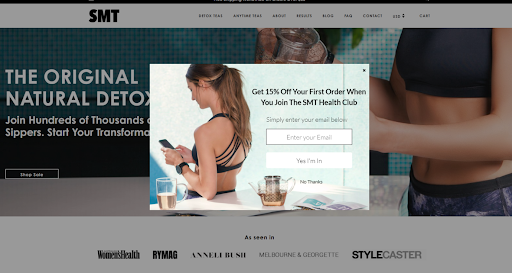
Chances are they’re evaluating you against a competitor and can’t make up their mind. You can target this specific behavior and entice them to buy from you with a dedicated pop-up. Offer them an irresistible discount on the first purchase.
Segment #3: Returning visitors who have started the buying process
Unfortunately, cart abandonment is real, significant, and happens to every store regardless of its target industry.
Luckily, pop-ups are an effective way to prevent it.
Exit intent, one of the triggering options in pop-ups, allows you to detect when someone is about to abandon the site, then display a relevant message to stop them from leaving.
Set a pop-up to trigger when a customer indicates the desire to leave the checkout page.

In addition to messaging them at the right time, I also need to ensure that I present the person with relevant information. To do that, I must understand why customers typically abandon their carts. Here are some of the most common reasons:
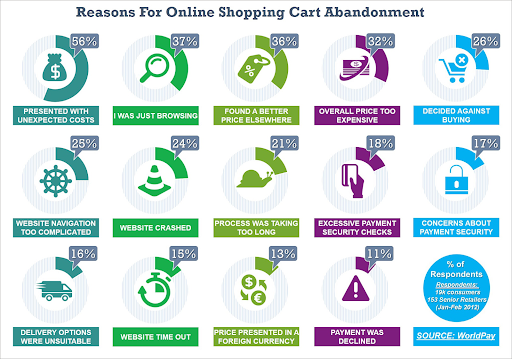 Source
Source
Considering this, A/B test different messaging, discounts, and offers to engage cart-abandoning customers.
Here are a couple of real-life examples:
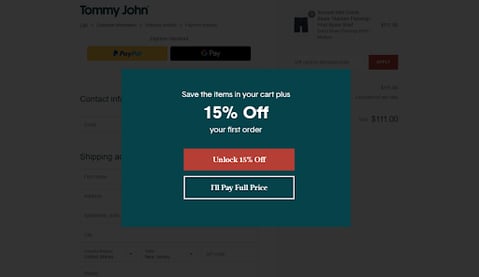
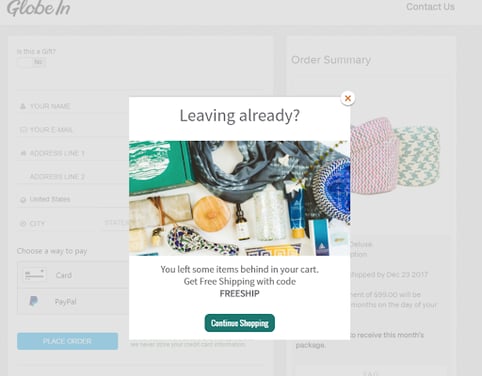
Segment #4: Visitors from specific locations
Not all stores ship worldwide; webstores are often visible in locations where the store cannot physically ship to. With geo-targeted pop-ups, stores can still engage with customers outside of their shipping range and convert them into email newsletter subscribers.
Here’s a pop-up that informs such visitors that the store doesn’t ship to their location yet, but offers to notify them when it does—through email subscription.
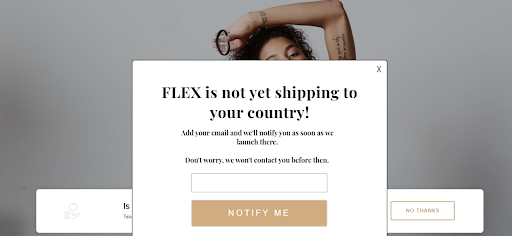
This pop-up, on the other hand, informs Canadian customers that products ship directly from their country.
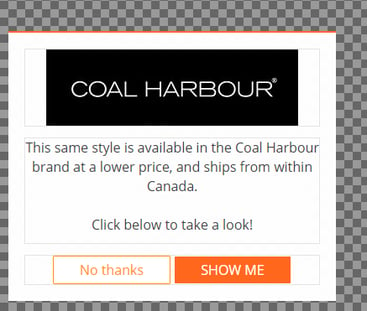
Segment #5: Visitors browsing on mobile devices
Pop-ups work across all devices; however, you shouldn't launch the same pop-up on desktop and mobile.
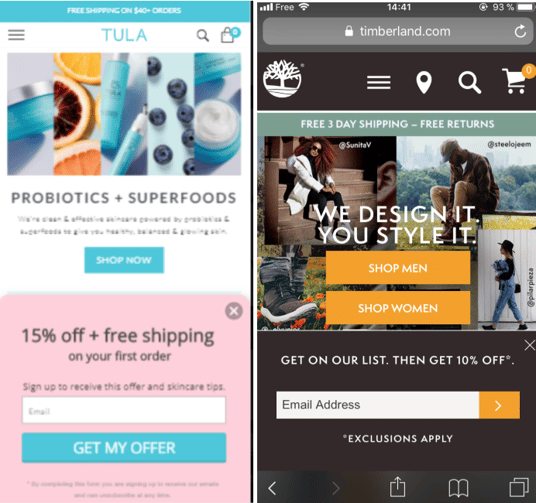
Instead, target mobile visitors by launching a dedicated mobile pop-up strategy. Because of their smaller size, mobile pop-ups should feature less copy than what you typically include in a desktop pop-up. They should also be easier to click off since mobile users have no mouse or trackpad on their devices.
Pop off!
A single pop-up isn’t capable of targeting the needs of all visitors. By using different triggering options and altering the content of your pop-ups, you can engage specific customer segments and greatly increase your pop-up conversion rate.
Want to enhance your overall marketing reach? Start using pop-ups as a marketing tool today. Get started with the best marketing software for your needs; find the right one today, only on G2.

 by Pratyusha Guha
by Pratyusha Guha
 by Stephen Jeske
by Stephen Jeske
 by Angela Yurchenko
by Angela Yurchenko